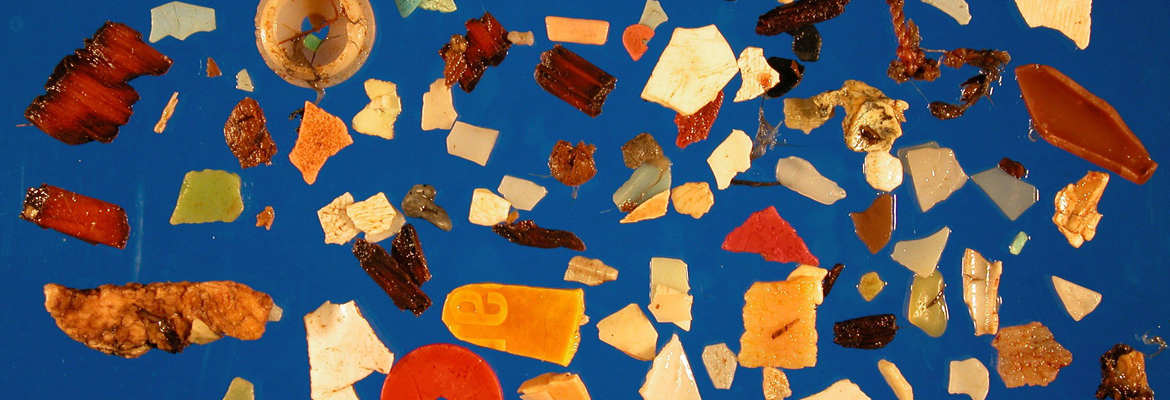The G7 ministerial summit on the environment – hosted in Bologna last June – was an opportunity to take off-schedule stock on the many themes that should be at the forefront of governments’ “environmental agenda.” Amongst the issues debated in the numerous side events that enlivened the Bologna initiative, that of pollution caused by plastic waste dispersal is extremely serious. Renewable Matter has dealt with the issue of plastic littering on many occasions, in particular with regard to the situation of many African nations.
The scope of the phenomenon, emerged over the last few years thanks to the media evidence showing “the discovery” of ocean trash vortices, had already been exposed in the Stop Waste Coalition’s founding document (see box), with data whose meaning is difficult to visualize: 5 million billion particles and fragments of plastic floating on the surface of oceans.
The event, promoted in Bologna in conjunction with the Italian Ministry for the Environment, the French Ministère de la Transition Ècologique et Solidaire and supported by Novamont, offered an opportunity for a debate for the coalition, focussing on the acquisition of further elements of knowledge and strategies to reduce the main origin of such phenomenon: plastic waste dispersal onto land.
Baptiste Legay – Deputy Director of Directorate General for the Prevention of Risks – was entrusted with the task of opening the event by illustrating the actions taken by the French government that identified marine litter as one of the priorities of its 2014-2020 waste prevention plan.
The International Coalition “Stop Plastic Waste”
Launched during the COP 22 Climate Change Conference held in Marrakech in January 2016, Stop Plastic Waste International Coalition includes national and local governments of countries willing to cooperate in the fight against marine plastic littering through the adoption of shared measures, including “promoting the elimination of single-use plastic bags.”
The coalition, founded by France, Morocco and the Principality of Monaco was joined by Australia, Bangladesh, Croatia, Chile, Italy, the Netherlands, Senegal and Sweden. The declaration issued when the coalition was launched stated that in almost thirty countries local or national policies against marine litter had already been adopted. However, according to the UNEP 2016 Annual Report over 100 nations have already taken measures to curb the spread of carrier and plastic bags.
The strengths of such actions are the ban to sell plastic carrier bags at cash registers adopted in 2016, followed by a similar ban on 1st January 2017 extended to other types of single-use up to 50 micron-thick bags, according to which they can only be of biodegradable or compostable plastic. The economic as well as environmental relevance of such legal innovations was confirmed during the conference by Sphere Group, an important French company in the field of food packaging. And by 2020 the same rules will apply to plastic cutlery, plates and cups. Such measures are thought as key for the huge impact they have in terms of raising awareness amongst consumers, as it happened in Italy, a pioneer country. The law for the protection of biodiversity passed in 2016 contains two more measures in this direction: the ban on cosmetic products containing microplastics (by 2018) and cotton buds by 2020. And the strategy also aims at a voluntary plastic waste management system deriving from fishing (first and foremost nets), at a dialogue with plastic industries in order to eliminate the dispersal of granules during the production process, at the promotion of a study on the toxicity of cigarette filters and at the potential for the creation of a dedicated management system. At international level, the action by the French government occurs within the coalition and amongst other things aims at setting up a toolbox of experiences and tools for decision makers and at the development of an aid programme for countries willing to start reducing plastic pollution on a voluntary basis.
Chile too, represented by the Ministry of the Environment Marcelo Mena Carrasco, adopted – with some difficulties – a policy of progressive ban on plastic carrier bags.
So, highlighting how the problem we are facing in setting up policies against plastic waste dispersal onto land – and therefore into water – is not at all a technological one, Catia Bastioli, Novamont’s CEO, underscored the role of the huge shortcomings in waste management. Indeed – according to data elaborated by the Ellen MacArthur Foundation with regard to packaging – only 2% of plastic collected to be recycled, which in turn is only a mere 14% of the 78 million tonnes produced annually – enters a recycling process that does not imply a matter downcycling. According to Bastioli, what is needed is a holistic approach towards waste management allowing us to single out in it all possible future resources. The development of biodegradable and compostable plastics – matters which are designed to be recyclable – is a step in this direction, enabling for example the best treatment of the organic waste fraction, besides offering an effective solution to replace single-use plastic bags. In short, a useful solution for the conservation of a fundamental component of the natural capital, such as the quality of soils and to reduce the impact of plastic litter on marine ecosystems. But Novamont’s green chemistry is able to suggest solutions also with regard to other sources of pollution of soils and waters, marketing bio-based, fully biodegradable solutions for lubricants and herbicides.
Rossella Muroni – Chairperson of Legambiente, Italy’s major environmental NGO – tackled the issue of the Mediterranean as a laboratory to experiment new grassroots strategies for the prevention and reduction of marine litter. The detailed data collection operation and characterization of waste carried out over more than 100 beaches in collaboration with the other coastal countries’ NGOs achieved results on two levels: better knowledge of what is dispersed in the environment and its provenance; better awareness on this topic by the whole community, through the involvement of volunteers carrying out waste collection and analysis. The results of the investigations carried out by Legambiente and Clean up the Med network since 2014 are available on a map accessible online.
Furthermore, François Galgani – professor at Ifremer (French Institute of marine research) – provided striking data, such as the 25,000 tonnes of plastics that flow into our seas and oceans every day. Where are such plastics? Literally everywhere, from the Mediterranean to Antarctica, scattered on sea bottoms, surfaces, beaches, ice, the biota, sediments, the atmosphere. A good 700 marine animal species are hit by this colossal waste flow into waters, 30% of which is represented by plastic bags. As a result, in certain areas, 100% of marine turtle population has ingested plastics, since they are unable to tell them apart from jellyfish which they feed on.
For the Italian Ministry of the Environment, Mariano Grillo (general director for waste and pollution) dealt with the issue of the recent laws on the cleaning of sea beds. The legal provision adopted by Italy includes an agreement for a programme for waste management in harbours, involving port authorities and harbourmasters. Besides the collection of waste from sea beds, according to the agreement, the recovered waste must be transported to treatment plants. The transposition decree of the framework directive on the strategy for the marine environment contains further measures in this regard: a project for the definition of measures to improve waste management (recycling, recovery, reuse) and the study of the waste collection and management sector. Moreover, a system promoting the recovery of plastic waste in rivers – i.e. before it reaches the sea – is also being researched.
Fabio Fava – professor of industrial and environmental biotechnologies and Italian representative in the planning committee on the bioeconomy for Horizon 2020 – reiterated how the actual implementation of the principles of the circular economy and of a circular bioeconomy in particular is an obligatory path to obtain significant advantages both for the environment and for reviving the economy and employment in key sectors such as rural and coastal areas where no other industries could be established.
Such guidelines characterize also the recent Italian strategy for the bioeconomy, adopted earlier this year. Gianluca Galletti – Italian Minister for the Environment – reiterated the importance to enlarge the coalition, in order to promote the reduction of plastic waste into the sea and the elimination of single-use plastic bags in all countries. Marine litter is a risk not only for ecosystems, but also for human health and economic sectors depending on the quality of marine and coastal environments. The environment is sending us a clear message, according to Galletti: either we win all together or we lose all together. Especially in closed environments, such as the Mediterranean, the problem is all the more serious. This is why Italy was the first country to ban non-biodegradable single-use carrier bags, risking even a violation procedure by the European Union for a choice ultimately deemed “too green.” Green chemistry, therefore, for the Italian government has a dual value – environmental as well as economic – also for its ability to create jobs that the petrochemical sector is no longer able to guarantee.
Following the event, Rwanda too joined the coalition. Renewable Matter has already talked about the “war” on plastic bags of this country.
So far, the team seems still far away from being able to represent a really global mobilization to combat sea pollution caused by plastic waste dispersal. 12 nations, 13 including Rwanda, a landlocked country (a membership by solidarity amongst countries polluted by plastic?). A heterogeneous and still limited group of countries. In Bologna the event closed in the hope that the coalition may grow. Otherwise, the first wholly man-made, impervious, water-resistant and unsinkable 7th continent will end up being detected also by Google maps.
Roberto Giovannini, “Flowers from Africa,” Renewable Matter, 11, July-August 2016; www.renewablematter.eu/art/237/Flowers_from_Africa
“Marine and Lake litter in Italy,” www.legambiente.it/marinelitter/?lang=eng
Mario Bonaccorso, “Industrial Renaissance,” Renewable Matter, 14, January-February 2017; www.renewablematter.eu/art/291/Industrial_Renaissance
Jonathan W. Rosen, “Rwanda’s War on Plastic,” Renewable Matter, 11, July-August 2016; www.renewablematter.eu/art/236/Rwandas_War_on_Plastic
UNEP, Report 2016 Engaging People to Protect the Planet, www.unep.org/annualreport/2016/index.php
Other info
Marine LitterWatch, www.eea.europa.eu/themes/coast_sea/marine-litterwatch
Plastic Pollution Coalition, www.plasticpollution coalition.org
Surfrider Foundation, www.surfrider.org/initiatives/plastic-pollution
Ban the Bag, act.greenpeace.org.au/efforts/ban-the-bag-1
“Production, use, and fate of all plastics ever made”, Science Advances, 3, 7, 2017, advances.sciencemag.org/content/3/7/e1700782.full
Top image: The image show all of the pieces of plastic that were removed from the stomach of a single north fulmar, a seabird, during a necropsy at the U. S. National Wildlife Health Lab
Photo: Carol Meteyer, U.S. Fish and Wildlife Service Headquarters. Wikimedia, Creative Commons 2.0



